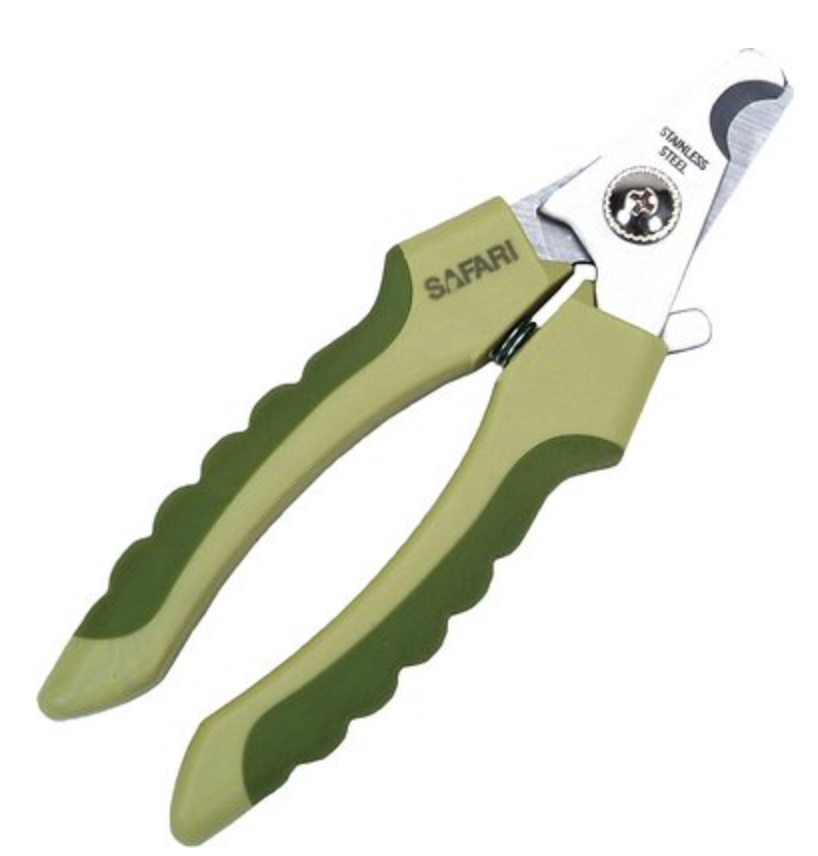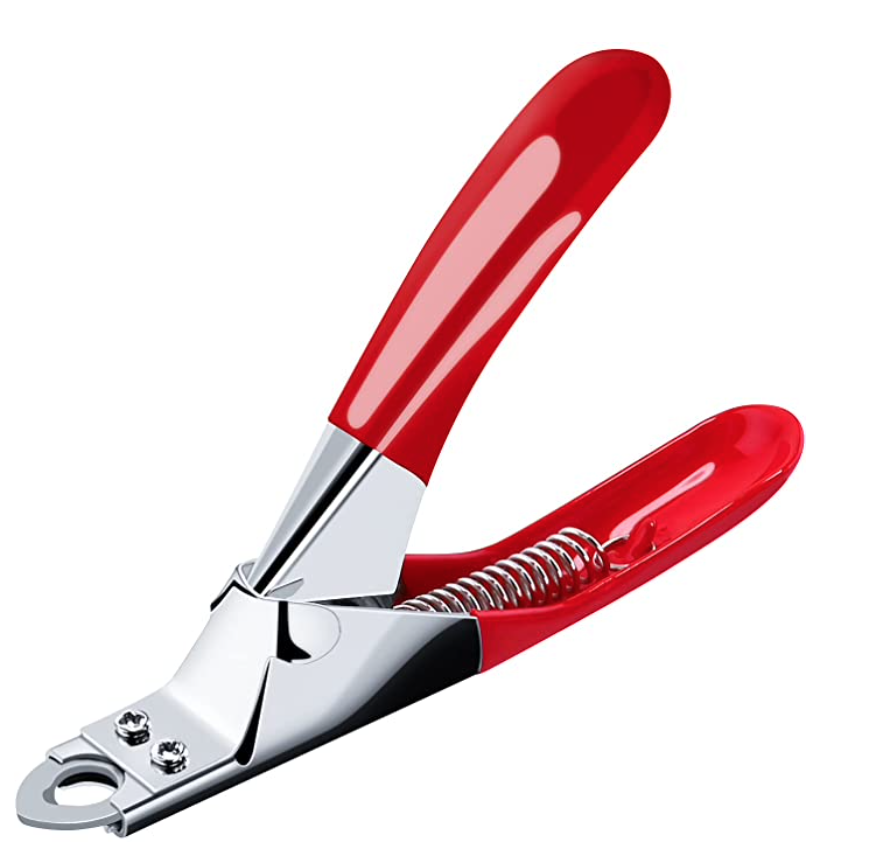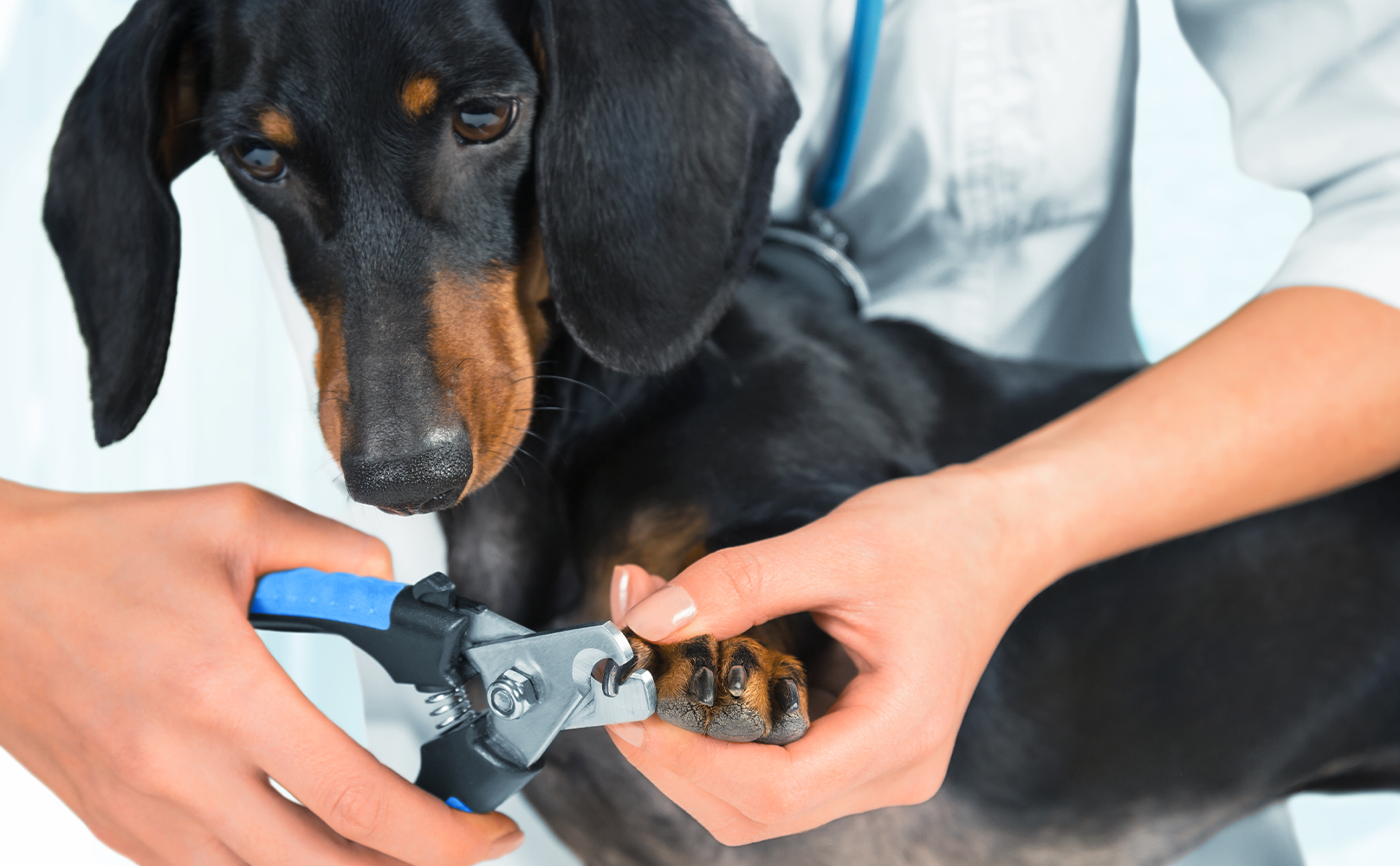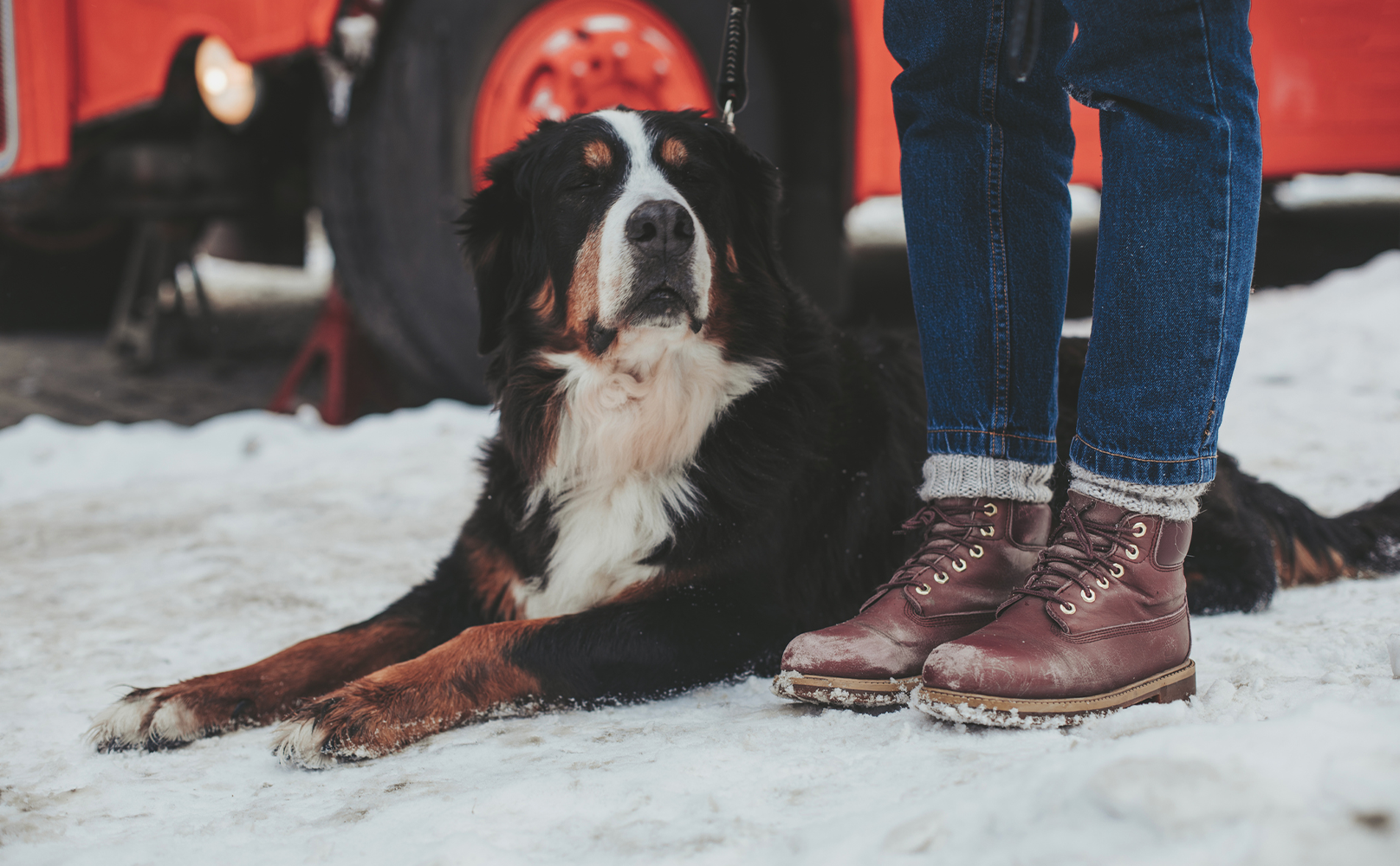It’s a Saturday afternoon and your dog comes walking into the room making the noise of someone furiously pressing the keys on an old typewriter. The dreaded feeling washes over you. It’s time for a trim. Rather than make a trip to the groomer’s, we’ll break down how to easily and painlessly (for both of you) trim your best friend’s nails.


Why Should You Cut Your Dog’s Nails?
“Wolves don’t trim their nails, maybe if I leave them alone my dog will take care of it like their ancestors.” That’s a good thought that I wrote out pretending it was you, but the major difference between a wolf and your pupper is that wolves are constantly on the move.
It’s estimated that wolves may travel up to 30 miles a day, mostly over rough terrain—there are many opportunities for the nails to be worn down naturally. Your dog, on the other hand, enjoys a life of comfort and scheduled outings. Their nails simply don’t have the chance to break down the same way.
“Ok wolf expert, what happens if I just leave the nails anyway?” Quite the contrarian, made up person I’m arguing with by myself. There are several reasons to keep Fido’s nails short and tight:
- If the nails become too long they may break or split, which could cause a lot of pain, potentially infection, and often a pricey urgent care visit. Plus, split nails can grow in weird later, making them more prone to splitting again.
- The nail could begin to curl and alter the way your dog moves around or how their paws stand on the ground. This messes with joints all the way up the leg!
- Too-long nails can reduce traction and leave them prone to other injuries.
- The adjustment of pain avoidance may cause your dog to widen their paw in such a way that could cause permanent damage to the ligaments of the foot.
“That’s not good.” Agreed. So, we know what could happen if this stressful task is avoided and why it is important to keep those nails trimmed.
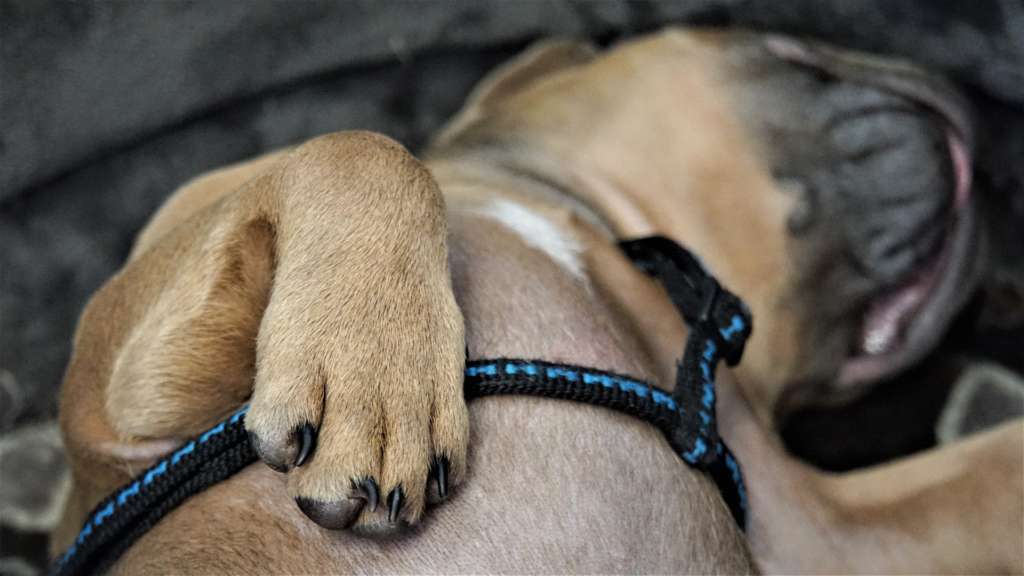

One of the major hurdles to trimming your dog’s nails is that they seem to despise it with a nightmarish dread and the dramatics of a first-year acting student. They don’t like it, and you don’t like doing it because you’ve never felt more like a medieval dungeon torture master. So what gives? If it’s not painful for them, why does it sure as heck seem that way?
There are a few reasons dogs become divas for nail trims:
- Pain or anticipation of pain.
- The sharp, loud noise of the clippers.
- The feeling of pressure when nails are cut.
- Resentment of restraint.
- They hate having their feet touched.
Does Nail Clipping Hurt My Dog?
The outer layer of a dog’s nail is insensitive to pain. But within the nail is something called the quick. This is the blood supply to the nail (similar to the underside of your nail, where the skin is attached to your nail), and it is very sensitive. If the quick is nicked, it hurts! Again, just like when you injure the tissue under your nail). The longer the nail becomes, the further the quick extends, as well— another reason it’s so important to trim those nails regularly (keeps the quicks short). The goods news is that the quick will gradually recede when the nail is trimmed shorter, even if you never cut it directly.
In summary, if you can avoid the quick and handle the feet gently, nail trimming does not hurt your dog! Remember, though, trimming nails has as much to do with psychology as it does with a physical treatment.
Related Article: What To Do If You Trim Your Pup’s Nails A Little Too Short


It is important to not only have a sharp pair of nail trimmers, but a pair best suited for your dog. A bigger dog will have a thicker nail, and a dual-blade clipper should be used, such as the one below to the left. For medium sized and smaller dogs, either dual-blade clippers or guillotine clippers will make effective cuts, such as the one below on the right.
Sharp, appropriately-sized blades will make the quickest cuts and put the least amount of pressure against the nail as it cuts. That means less discomfort for your dog!
How To Trim Your Dog’s Nails
Following the infallible truth of Murphy’s law, we recommend you also get some styptic powder (like Kwik Stop) in case you do nick the quick. Simply grab a big ol’ pinch of this powder and push it against the cut side of the nail to stop the bleeding and provide a little numbing action.
Step 1:
Before trimming, create a calm environment for your dog. Use a soft voice. I don’t know if they get ASMR tingles, but a soothing voice is soothing nonetheless. Rub the paw gently until you get to the desired toe and toenail.
If your dog is shy about having their feet touched, you may need to start with simple toe-touching sessions before you ever even get out the clippers. Lots of rewards (verbal and food) are key!
Step 2:
Begin by trimming the just the tip of the nail. The cuts should be small slivers. The goal is to not cut a big chunk off the nail in one go, but to take your time little by little. This will prevent you from accidentally nicking the quick, which is the scary thing you read about a minute or so ago.
If your dog has clear or white nails, the quick can be seen quite easily. It will be pinkish in color and you can trim up to that pink with no issues.
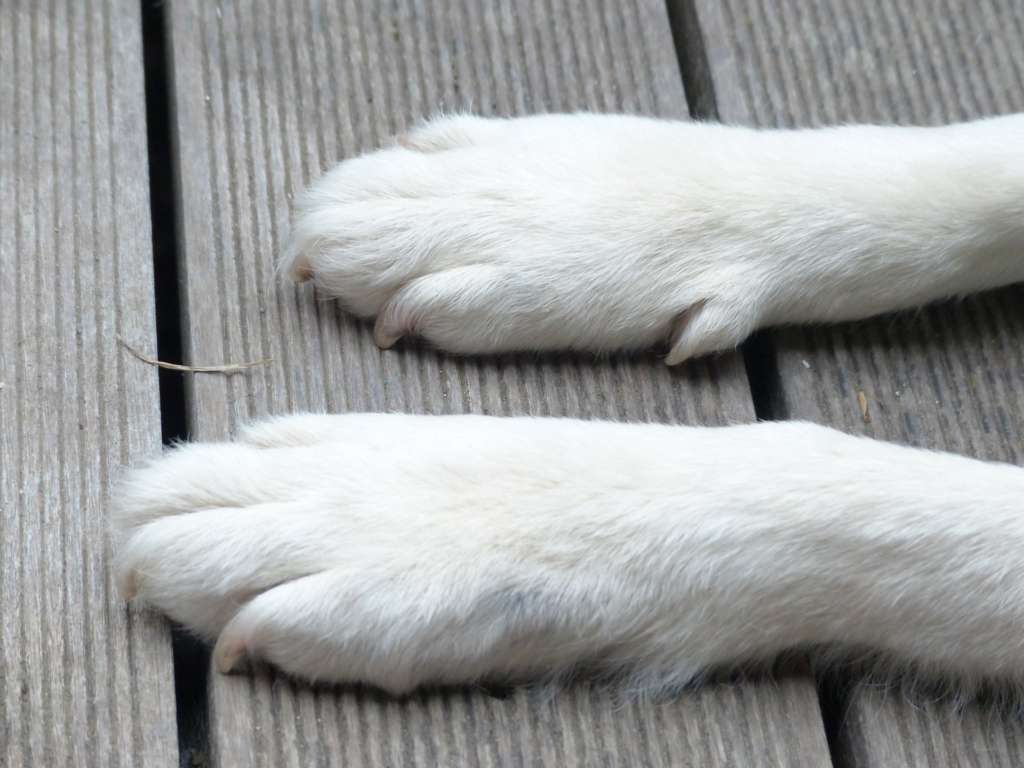

A lot of canine companions have dark nails, and the pink will not be seen. After you trim small sections at a time, you will see a small black dot in the center of the nail. That is the start of the quick and you do not want to go any shorter than that.
Step 3:
Have lots of treats nearby! Give one after each nail, or each paw, depending on how brave your dog is being. Read the room, and remember that treats earn forgiveness for just about anything.


What If I Do Cut The Quick?
Stay calm! Grab that styptic powder and use it to stop the bleeding (this powder is magical and will stop the bleeding in seconds, we promise!). Speak calmly to your pup, apologize lovingly, and give some treats.
If you don’t feel up for continuing with the nail trim, at least touch their other toes and nails with your fingers before calling it quits. You don’t want the final nail trim experience to be the cut quick, if you can help it. Try to clip the tippy-tip of another nail when you are both calm again. Show your pup that this was just an unfortunate random event, and that it doesn’t signal the end of the process.
Some additional tips:
- Don’t forget about the dewclaws (if your dog has them). These little suckers LOVE to catch on things as your dog runs, so a long dewclaw is a torn nail waiting to happen.
- Start slow with little trims. Nothing wrong with taking the tippy-tips and calling it a day the first few times. Progress is progress!
- You might be able to ask to be shown how to trim nails by your vet’s office at your pup’s next visit.
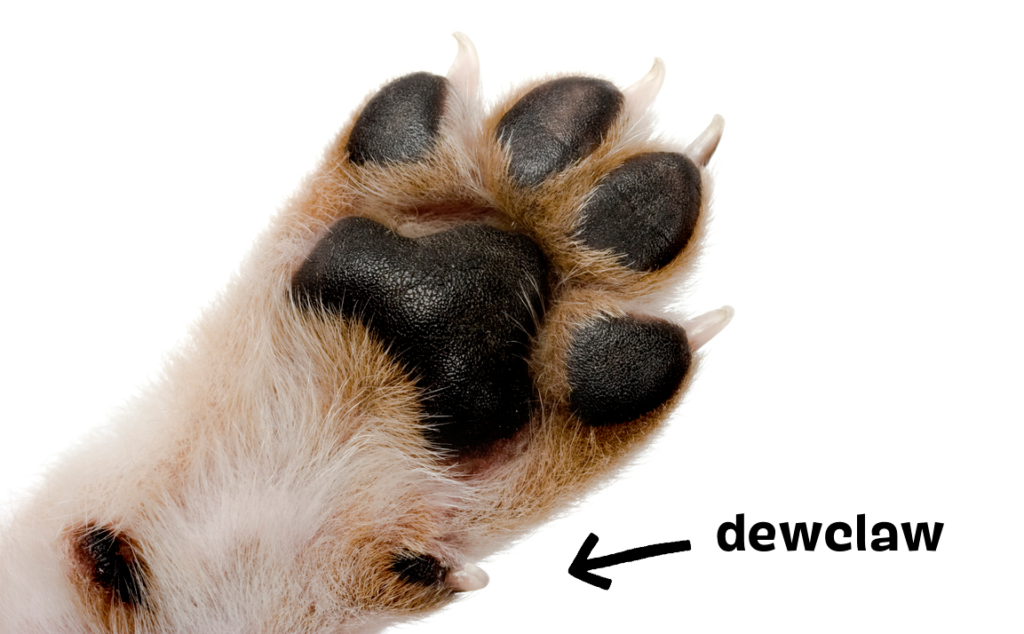

That’s it! Not so scary after all. A fresh set of trimmed nails will have your dog sneaking around the kitchen in no time. With each new trim session, you and your pup will become more comfortable with the process, and then you can finally open that dog nail salon you’ve always dreamed about.
This post has been reviewed by Margo Hennet, DVM.
Margo Hennet, DVM, cVMA, and veterinarian at BARK is a canine nutrition, health, & wellness connoisseur. She has a combined 10 years of experience in clinical medicine, research, and education—that’s 70 dog years of know-how—and graduated from Colorado State University as a Doctor of Veterinary Medicine. She completed specialized training in internal medicine prior to working as a general practitioner in Colorado, has authored peer-reviewed publications and textbook chapters, holds certification in veterinary medical acupuncture, and is a member of the American Academy of Veterinary Nutrition and American Veterinary Medical Association.

